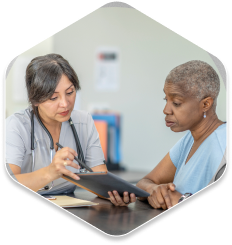
Cancer screening
Getting routine cancer screenings can help find cancer earlier, before it spreads. Learn which cancer screenings may be recommended for you and how to talk to your doctor about them.
Why is cancer screening needed?
Finding cancer early is important. When doctors find cancer at an earlier stage (before it has grown or spread to other parts of the body), they may be able to treat it more successfully.
How do you get screened for cancers? Start by making an appointment with your primary care doctor to talk about screening. Your doctor can help direct you to the right screenings based on things like your age and gender.
If you don’t have a primary care doctor, there are tools available to help. If you have insurance, visit your insurer’s website and use their “find a doctor” tool to locate a doctor that is in your network and accepts your insurance. If you don’t have insurance, visit healthcare.gov to search for a local community health center.

What is my chance of getting cancer?
Your chance of getting cancer, also called cancer risk, is based on things like your age, genetics, and other risk factors.
There are many risk factors for the many different types of cancer. But in general, cancer risk factors include, but are not limited to:

Age

Family history

Gender

Race

Lifestyle factors

Care team conversations
Use this list of questions below to help guide your conversation about screening with your care team:
- What cancer screening tests are recommended for someone my age?
- Can you order all of the screening tests?
- Do I need to see another doctor for any of these recommended screening tests?
- Which of the screening tests should I get first?
- Do I have to get screened right away?
- If I canceled a screening appointment, when should I reschedule?
- Is it a problem if I missed my regular screening test?
- What are the risks of getting screened for cancer?
- Are there screening tests that I can do at home?
Cancer screening recommendations
Here are some important cancer screenings you may need, depending on your age. Learn more about screening from the American Cancer Society’s Guidelines for the Early Detection of Cancer.
If you think you may be at a higher risk for a cancer because of family history or other factors, bring this up with your doctor. You may need to be screened at a younger age.
Age 25–39
| Cervical cancer |
Age 40–49
| Breast cancer |
| Cervical cancer |
| Colorectal cancer |
Age 50 and over
| Breast cancer |
| Cervical cancer |
| Colorectal cancer |
| Prostate cancer |
| Lung cancer |
Older age is a risk factor for cancer

About four out of 10 Americans will have cancer sometime during their lifetime. Half of all cancer cases occur in people 66 years and older.
Types of cancer screening

Starting at age 25 and through age 65, all people with a cervix should have a primary HPV (human papillomavirus) test every 5 years. If that is not available to you, you should have:
- A co-test (an HPV test done at the same time as a Pap test) every 5 years, or
- A Pap test done alone every 3 years
Cervical cancer rates are higher in women of color
In 2018, the rate of cervical cancer was:
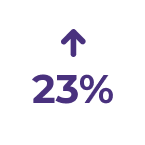
American Indian/Alaska Native women
23% higher in American Indian/Alaska Native (AI/AN) women than in non-Hispanic White women
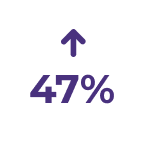
Hispanic women
47% higher in Hispanic women than in non-Hispanic White women

Black women
48% higher in Black women than in White women
From age 45 to 75, everyone at average risk of colorectal cancer should be screened. Testing options include:
- A stool-based test: you collect the stool sample and send it off to be tested
- A visual exam: a colonoscopy is a visual examination of the colon and rectum in which an instrument is inserted into the rectum. For patients age 45-75 who are at average risk, the American Cancer Society (2023) recommends a colonoscopy every 10 years
Recommended testing options may vary for specific age groups, and there may be different recommendations for patients over age 75. Talk to your health care provider about which testing options are right for you.
Younger Black and Hispanic Americans are at a higher risk of colorectal cancer
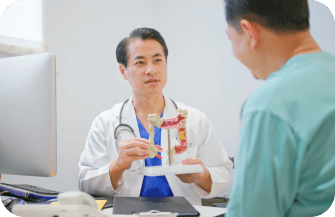
In recent years, the rate of colorectal cancer in people younger than 50 years has increased 2.2% each year, with higher rates in Black and Hispanic people than White. In response, the United States Preventive Services Task Force (USPSTF) lowered the screening age from age 50 to 45.

It is important to talk with your doctor about the risks, benefits, and uncertainties of testing for prostate cancer. It is still unclear whether the benefits of prostate cancer screening outweigh the risk for most men. The ACS recommendation for prostate cancer screening includes:
- Age 45 for men at high risk. High risk includes Black men and men who have a first-degree relative (such as a father or brother) diagnosed with prostate cancer younger than age 65.
- Age 40 for men at higher risk. Higher risk includes those men with more than one first-degree relative (such as a father or brother) who had prostate cancer younger than age 65.
Men age 50 and older who are at average risk should discuss recommended screenings with their health care provider.
Prostate cancer is more common in Black Americans
The rate of prostate cancer incidence was 65% higher in non-Hispanic Black men than non-Hispanic White men between 2016 and 2020 according to the National Cancer Institute’s (NCI’s) Surveillance, Epidemiology, and End Results (SEER) Program. Non-Hispanic Black men are twice as likely to die of prostate cancer as non-Hispanic White men.

From age 50 to 54, you should get a mammogram (x-ray of the breast) every year
At age 55, you may choose to have a mammogram every 2 years or stay with the yearly schedule
If you are at higher risk of breast cancer, breast exams may be done by your health care provider. However, all women should be aware of how their breasts normally look and feel. You can perform self-exams and you should report any changes to your health care provider.
Dense breasts and breast cancer risk
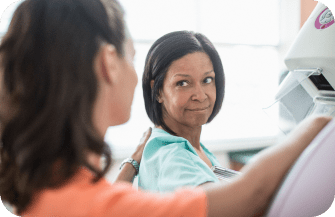
Having dense breasts (which refers to the way the breast tissue looks on a mammogram) is a known risk for breast cancer, and Black women are more likely than White women to have dense breasts. Studies have found that 3D mammography is able to find more breast cancers, lowers the need for follow-up testing after screening, and can be helpful in women with more dense breasts.

Yearly screening is recommended using a low-dose CT (LDCT) scan for people ages 50 to 80 who currently smoke or have quit in the last 15 years and have at least a 20 pack-year history of smoking.
Talk to your health care provider to determine if you are at high risk of lung cancer and if you are eligible for screening.
Where can I get screened for cancer?
If you have a primary doctor, that’s a good place to start. They can help you understand which screenings you need and how to get them.
If you don’t have a primary care doctor, you can find information about how to get screened for cancer if you don’t have a doctor from the American Cancer Society.
If you are covered by Medicare, visit Medicare Coverage for Cancer Prevention and Early Detection from the American Cancer Society.
You can also call your local hospital, health department, or use this online tool to find a screening location near you.
Encouraging a loved one
We all may have this person in our lives—the cousin who finally quit smoking but hasn’t been screened for lung cancer. The friend who refuses to see doctors for any reason but has a history of breast cancer in her family. The family member who got sunburned every summer but won’t have his moles looked at.
Some ways you can encourage, support, and inform them to get recommended screenings include:
- Ask them if they’ve considered getting screened
- Find out (nicely) why they haven’t been screened
- Make sure they know you care about them, and that’s why you’re asking them about screening
- Connect them with someone who recently was screened
- Tell them about your own screening experience
- Make a plan to celebrate after they get screened
- Check in with them after screening for their results

Where can I find more cancer support?
Access resources that may help you during cancer treatment, including how to find financial support, local childcare, transportation services, and other important resources.
US-KEY-08155 09/24




